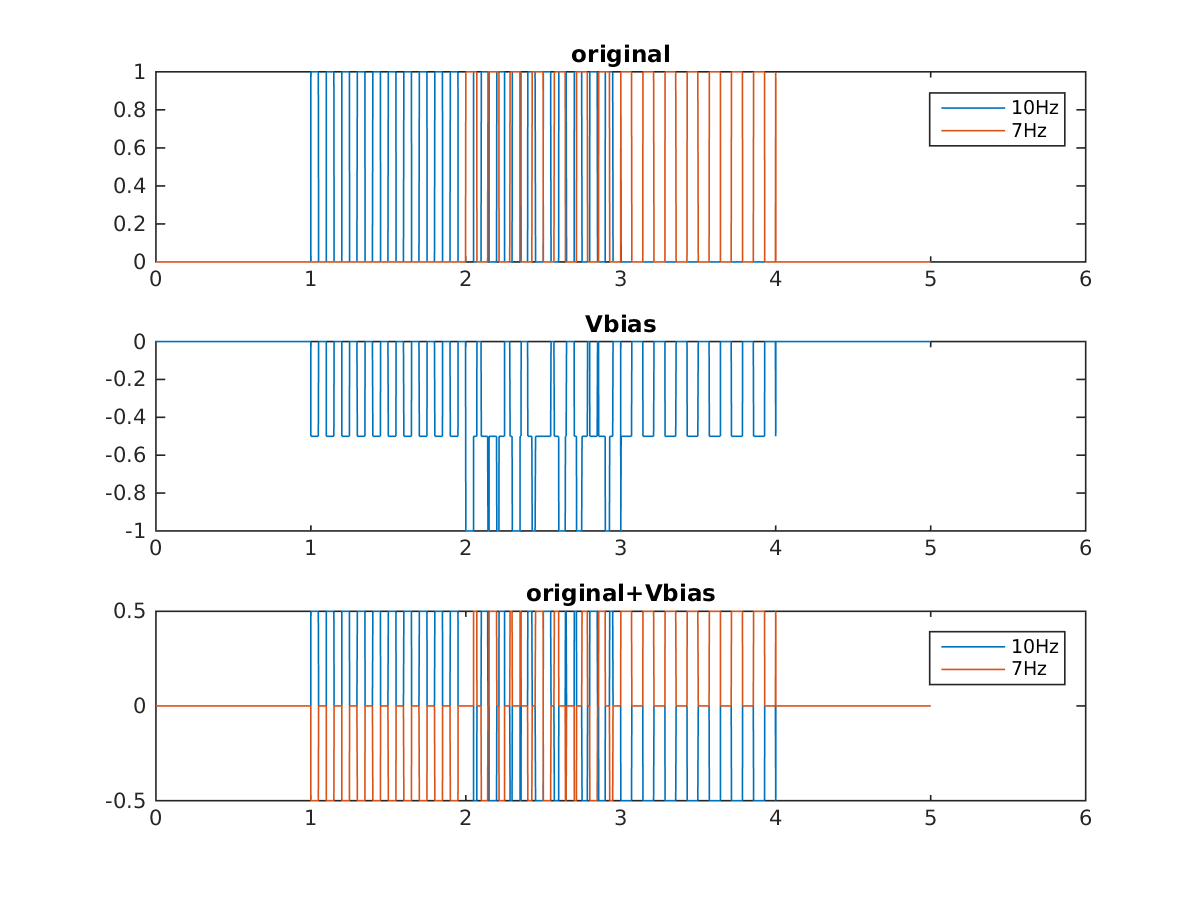I'm testing acquisition of EEG data with ADS. I have included the chip on a custom PCB with the necessary power supply (from battery) and signal conditioning for the input signals. A raspberry pi (RPi) is used to acquire samples from the amplifier through SPI.
To test data acquisition, I have two GPIO pins on the RPi generate delayed 10Hz and 7Hz square waves (between GND and 3.3V), which are then attenuated by voltage divider network by 100 before feeding into IN1P and IN2P of the amplifier. GND is fed into SRB1 of ADS, and the ADS operate in referential montage with respect to SRB1. The VSSA and VDDA for ADS are -2.5 and +2.5V. This works as expected and I acquire the different 10Hz and 7Hz waveforms (described by box 1 in the Figure 1 below).
I then want to test the right-leg drive by the bias amplifier. My test setup is indicated in box 2 in the Figure 1: the attenuated square waves are buffered and summed with Vbias before entering ADS. I configured the bias amplifier to take the average of the measured signals. This resulted in something similar to that in Figure 2 (Vbias calculated as the average of the input signals):
On the scope the output (original+bias in the figure) has ripples due to the Rf-Cf feedback of the bias amplifier. While the results are exactly what I expected, I am not sure if my test setup models RLD correctly -- in the original+Vbias plot, during the time period where the 10Hz and 7Hz overlap, the frequency information is lost distorted.
The purpose of RLD is to enhance common-mode rejection...an alternative I could think of is to add a small common mode Vcm to V1 and V2 (box 3 in Figure 1). But it would still not be able to preserve the 10Hz and 7Hz information in the resulting signals.
I have read the SBAA188 application report on right-leg drive, in its test setup in Figure 7, it applies the same signal to both input channels (one through RC-network, the other no RC-network). But this does not address the distortion of the measured signals by the bias signal. Am I understanding this correctly? What is the correct way to model the effects of RLD?




